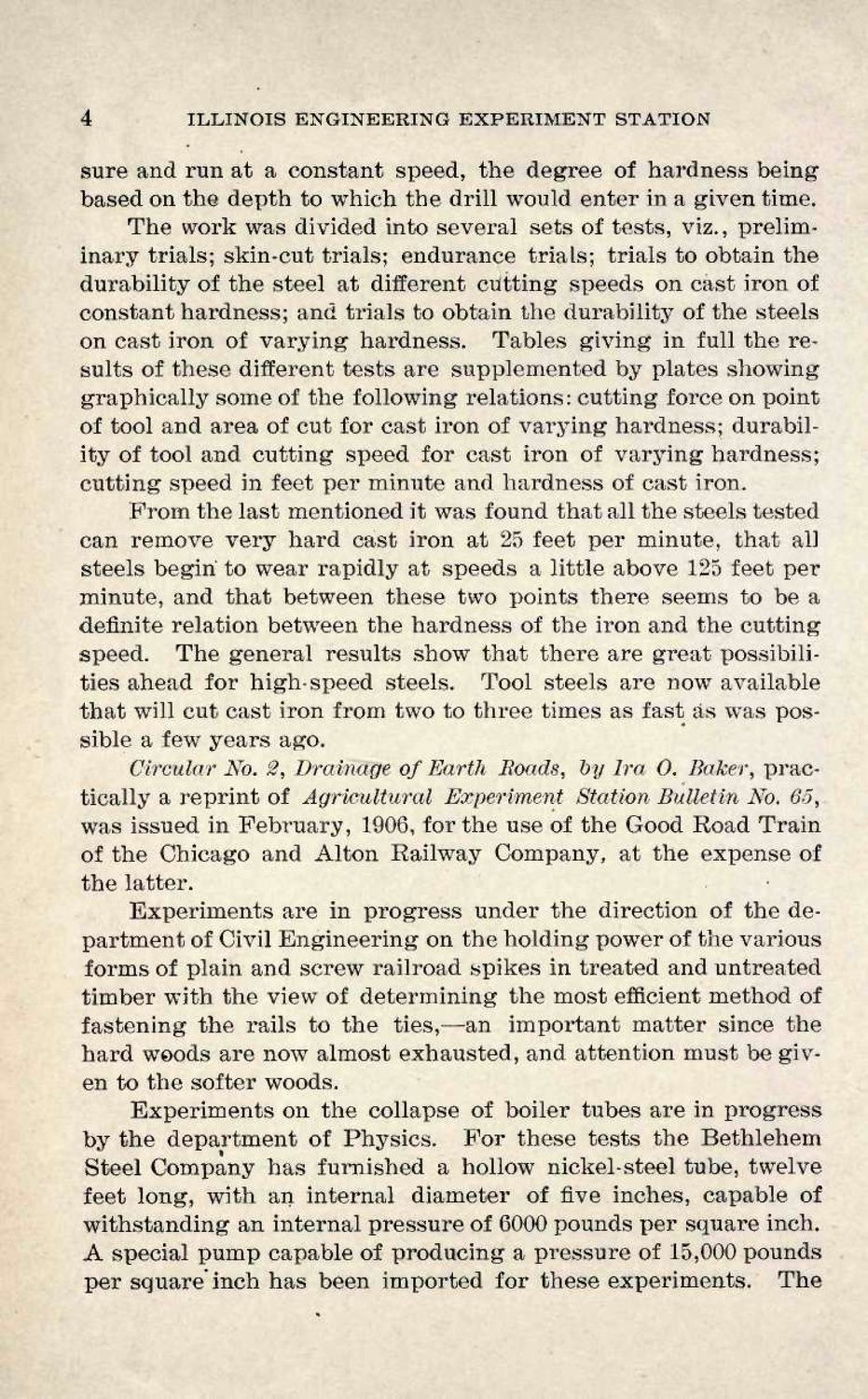| |
| |
Caption: Book - First Years of Engineering Experiment Station (1906)
This is a reduced-resolution page image for fast online browsing.

EXTRACTED TEXT FROM PAGE:
4 ILLINOIS ENGINEERING EXPERIMENT STATION sure and run at a constant speed, the degree of hardness being based on the depth to which the drill would enter in a given time. The work was divided into several sets of tests, viz., preliminary trials; skin-cut trials; endurance trials; trials to obtain the durability of the steel at different cutting speeds on cast iron of constant hardness; and trials to obtain the durability of the steels on cast iron of varying hardness. Tables giving in full the results of these different tests are supplemented by plates showing graphically some of the following relations: cutting force on point of tool and area of cut for cast iron of varying hardness; durability of tool and cutting speed for cast iron of varying hardness; cutting speed in feet per minute and hardness of cast iron. F r o m the last mentioned it was found t h a t all the steels tested can remove very hard cast iron at 25 feet per minute, that all steels begin to wear rapidly at speeds a little above 125 feet per minute, and t h a t between these two points there seems to be a definite relation between the hardness of the iron and the cutting speed. The general results show t h a t there are great possibilities ahead for high-speed steels. Tool steels are now available t h a t will cut cast iron from two to three times as fast as was possible a few years ago. Circular No. 2, Drainage of Earth Roads, by Ira 0. Baker, practically a reprint of Agricultural Experiment Station Bulletin No. 65, was issued in F e b r u a r y , 1906, for the use of the Good Road Train of the Chicago and Alton Railway Company, at the expense of the latter. Experiments are in progress under the direction of the department of Civil Engineering on the holding power of the various forms of plain and screw railroad spikes in treated and untreated timber with the view of determining the most efficient method of fastening t h e rails to t h e ties,—an important matter since the hard woods are now almost exhausted, and attention must be given to t h e softer woods. Experiments on the collapse of boiler tubes are in progress by t h e department of Physics. F o r these tests the Bethlehem Steel Company has furnished a hollow nickel-steel tube, twelve feet long, with an internal diameter of five inches, capable of withstanding an internal pressure of 6000 pounds per square inch. A special pump capable of producing a pressure of 15,000 pounds per square inch has been imported for these experiments. The
| |